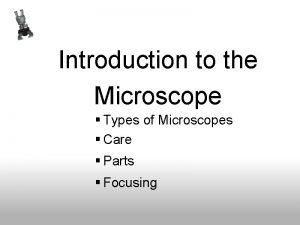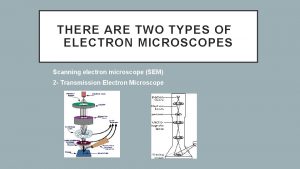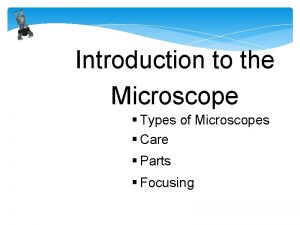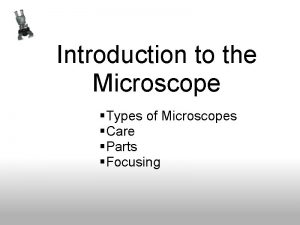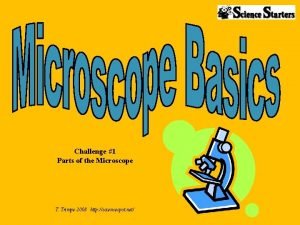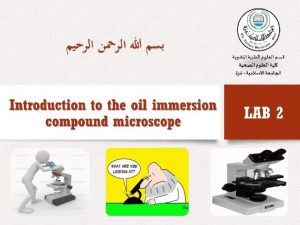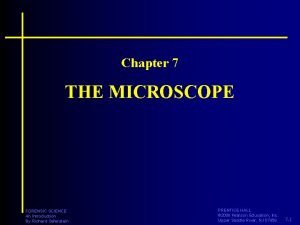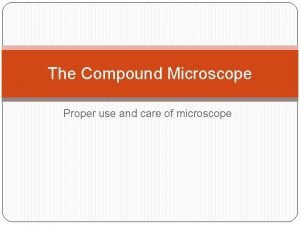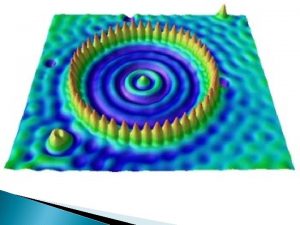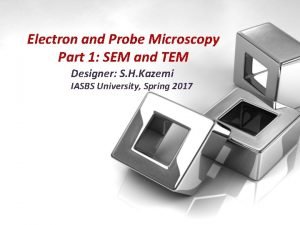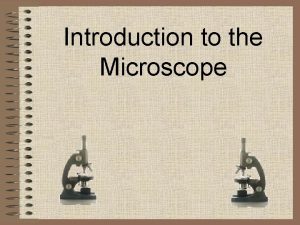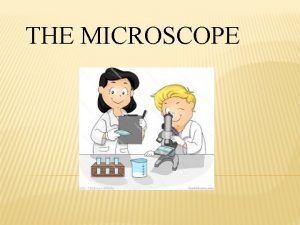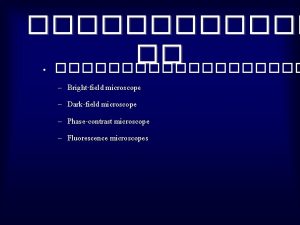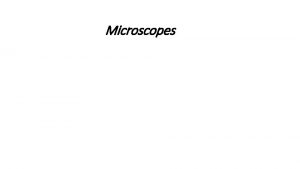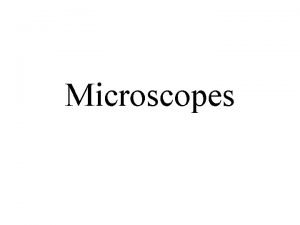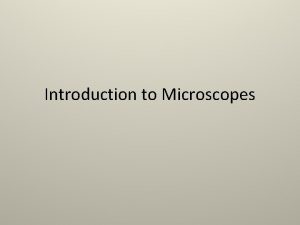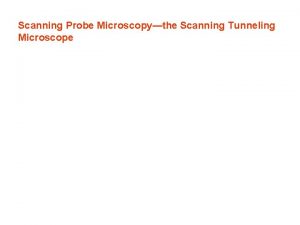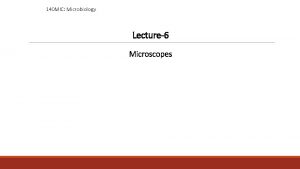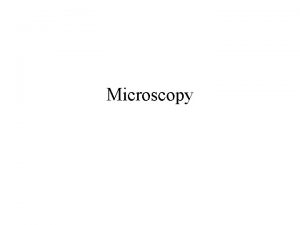Types of Microscopes Compound Microscope Dissection Microscope Scanning












- Slides: 12

Types of Microscopes

• Compound Microscope • Dissection Microscope • Scanning Electron Microscope (SEM) • Transmission Electron Microscope (TEM)

Compound microscopes are light illuminated. The image seen with this type of microscope is two dimensional. This microscope is the most commonly used. You can view individual cells, even living ones. It has high magnification. However, it has a low resolution.

Paulownia Wood c. s. 200 x Frog’s blood 1, 000 x

A dissection microscope is light illuminated. The image that appears is three dimensional. It is used for dissection to get a better look at the larger specimen. You cannot see individual cells because it has a low magnification. (also called stereo microscope)

Head of a moth pupa 60 x Sunflower with moth pupa in the stem 10 x

SEM use electron illumination. The image is seen in 3 -D. It has high magnification and high resolution. The specimen is coated in gold and the electrons bounce off to give you and exterior view of the specimen. The pictures are in black and white.

pigeon blood cockroach antenna

TEM is electron illuminated. This gives a 2 -D view. Thin slices of specimen are obtained. The electron beams pass through this. It has high magnification and high resolution.

bacillus bacteria dividing mitochondrion

Other Types • Confocal Microscopes – Use lasers – Can use fluorescent (glow in the dark) stains to color different parts of the cell

Other Types • Acoustic Microscope – Use sound to “see” – Used mostly to find errors than to get pictures
 When focusing a specimen, you should always start with the
When focusing a specimen, you should always start with the Types of electron microscope
Types of electron microscope Types of microscopes
Types of microscopes Types of microscopes
Types of microscopes Microscope mania compound light microscope
Microscope mania compound light microscope T. trimpe 2006 http://sciencespot.net/
T. trimpe 2006 http://sciencespot.net/ The purpose of microscope
The purpose of microscope Forensic science microscopes
Forensic science microscopes Which organelle breaks down organelles that are no
Which organelle breaks down organelles that are no Uses of light microscopes
Uses of light microscopes Electron microscopes main idea
Electron microscopes main idea Tem vs sem
Tem vs sem Define scanning tunneling microscope
Define scanning tunneling microscope
